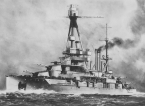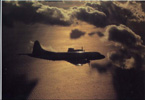JeffroK
Posts: 6391
Joined: 1/26/2005
Status: offline

|
From https://www.awm.gov.au/articles/blog/battle-of-britain?search
The vast majority of men and women who participated in the Battle of Britain were Britons themselves, but members from the other Allied countries made significant contributions to the aerial victory over the Luftwaffe. Pilots from Australia, New Zealand, Canada, India, South Africa, Rhodesia, Jamaica, and the British Mandate of Palestine all flew aerial operations during the battle, as did French, Belgian, and Czechoslovakian aircrew. Volunteers from the United States comprised three Eagle Squadrons attached to Fighter Command, and Poland contributed pilots and aircrew for three whole squadrons. The Hurricane pilots of No. 303 (Kosciuszko) Squadron RAF claimed no less than 126 aerial victories over German aircraft during the three-month campaign. Having lost their own country to the German invaders, Polish pilots were renowned for their daring in fighting for Britain, which they called "last hope island". A saying at the time went: "If you want a short life and a glorious death, fly with a Polish airman."
Australia too can be proud that it contributed to the defence of Britain in that crucial summer and autumn, flying operations with Fighter Command, Bomber Command, and Coastal Command. One Australian who flew in Fighter Command during the battle was Flight Lieutenant Pat Hughes of Cooma, New South Wales, who had at least fifteen and half credited kills to his tally and was among the top ten leading aces of the time. Like many of the Australians who flew during the Battle of Britain, Hughes had been a pre-war member of the Royal Australian Air Force, but had transferred to the Royal Air Force under the Short Service Commission Scheme in 1937. He was attached to No. 234 Squadron RAF and flew air cover operations in Spitfires over airfields in Plymouth, and later conducted long distance missions in the Atlantic Ocean and over the Mediterranean Sea. On 15 August 1940, Pat Hughes claimed a double victory of two Messerschmitt Bf110 heavy fighters which earned him the Distinguished Flying Cross. He was killed less than three weeks later, on 7 September 1940, intercepting a large formation of Dornier bombers and their escort of Messerschmitt fighters over Kent.
Thirty-five Australians flew combat operations during the Battle of Britain, of whom ten were killed in action. They were among the airmen immortalised by British Prime Minister Winston Churchill in his powerful tribute to the men of Fighter Command: "Never in the field of human conflict was so much owed by so many to so few."
Also https://www.awm.gov.au/articles/encyclopedia/battle_of_britain?search
Twenty-five Australians were considered eligible for the Battle of Britain clasp to the 1939–45 Star. Others flew during the battle with RAF Bomber Command and Coastal Command but the total number involved in the battle did not exceed 35. Eight Australians became air aces by shooting down five or more enemy aircraft. Pat Hughes from Cooma had 14 successes, which puts him among the ten leading aces of the battle.
Of the total of 537 RAF Fighter Command pilots who died at least ten were Australian. Another four who were enlisted in the Royal Australian Air Force also died.
< Message edited by JeffK -- 6/8/2017 8:31:41 PM >
_____________________________
Interdum feror cupidine partium magnarum Europae vincendarum
|
 Printable Version
Printable Version





























 .
.  ), and that's fine, we all have different expectations/hopes - not to mention political footballs to kick
), and that's fine, we all have different expectations/hopes - not to mention political footballs to kick  .
. 


 New Messages
New Messages No New Messages
No New Messages Hot Topic w/ New Messages
Hot Topic w/ New Messages Hot Topic w/o New Messages
Hot Topic w/o New Messages Locked w/ New Messages
Locked w/ New Messages Locked w/o New Messages
Locked w/o New Messages Post New Thread
Post New Thread